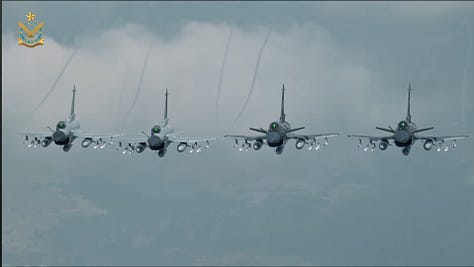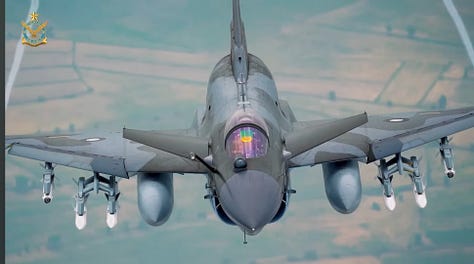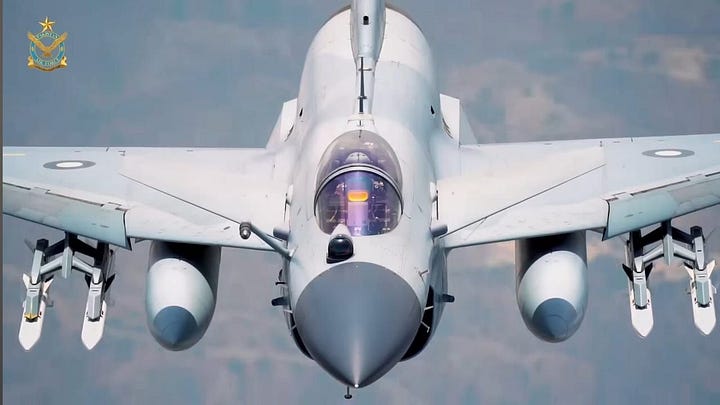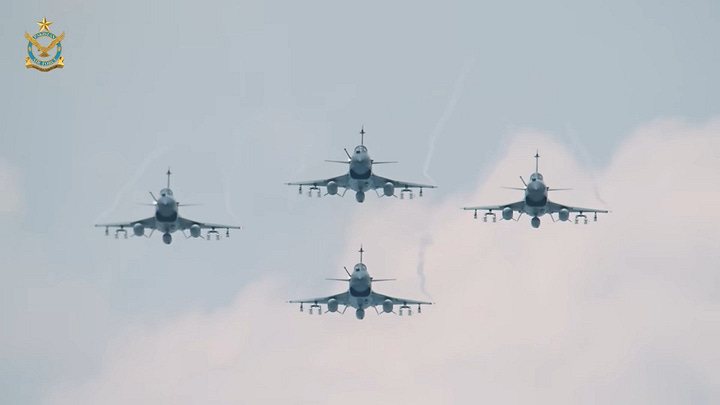New Images From Pakistan Draw Attention To Payload Restrictions Of J-10 Fighter Aircraft Design
🇨🇳 🇵🇰
Note: The following text was originally posted on my X/Twitter account.
These images of Pakistan Air Force J-10CE fighters highlight the importance of dual/twin racks for the employment of long-range air-to-air missiles—PL-15 air-to-air missiles in this case—on the Chinese J-10 fighter aircraft design. The J-10 family needs dual/twin racks due to the combined effects of a rather small internal fuel tank(s), which necessitates the regular carriage of two, if not three, drop tanks/external fuel tanks, and the non-availability of wingtip weapon stations on the J-10 family, which allow the likes of the American F-16 fighter aircraft family to carry either two AIM-9 short-range air-to-air missiles or two AIM-120 long-range air-to-air missiles and thereby mitigate the effects of the F-16's (comparatively lesser) need to regularly carry external fuel tanks.





While the PLA Air Force (PLAAF) is transitioning toward new several newer aircraft designs that primarily store munitions in internal weapons bays, a dynamic that result in its own set of challenges for the PLAAF and other air forces more generally, the PLAAF's sizeable J-10C fleet—and to a lesser extent its (so-far) non-upgraded large J-10A fleet—is likely to play a key role in defending Chinese airspace over the coming decades even as will likely lose its frontline "offensive" roles over the 2030s. The ability to carry two PL-15 air-to-air missiles on a single weapon station will free up other weapon stations for the carriage of standoff strike munitions and, more generally, enhance the ability of the PLAAF's J-10C units to intercept American, Japanese, and Taiwanese land-attack cruise missiles. For the Pakistan Air Force, the dual/twin racks similarly enhance the ability of the J-10CE to take on a central role in both air-to-air and air-to-ground sorties against a quantitatively and, in many respects, qualitatively superior Indian Air Force.

